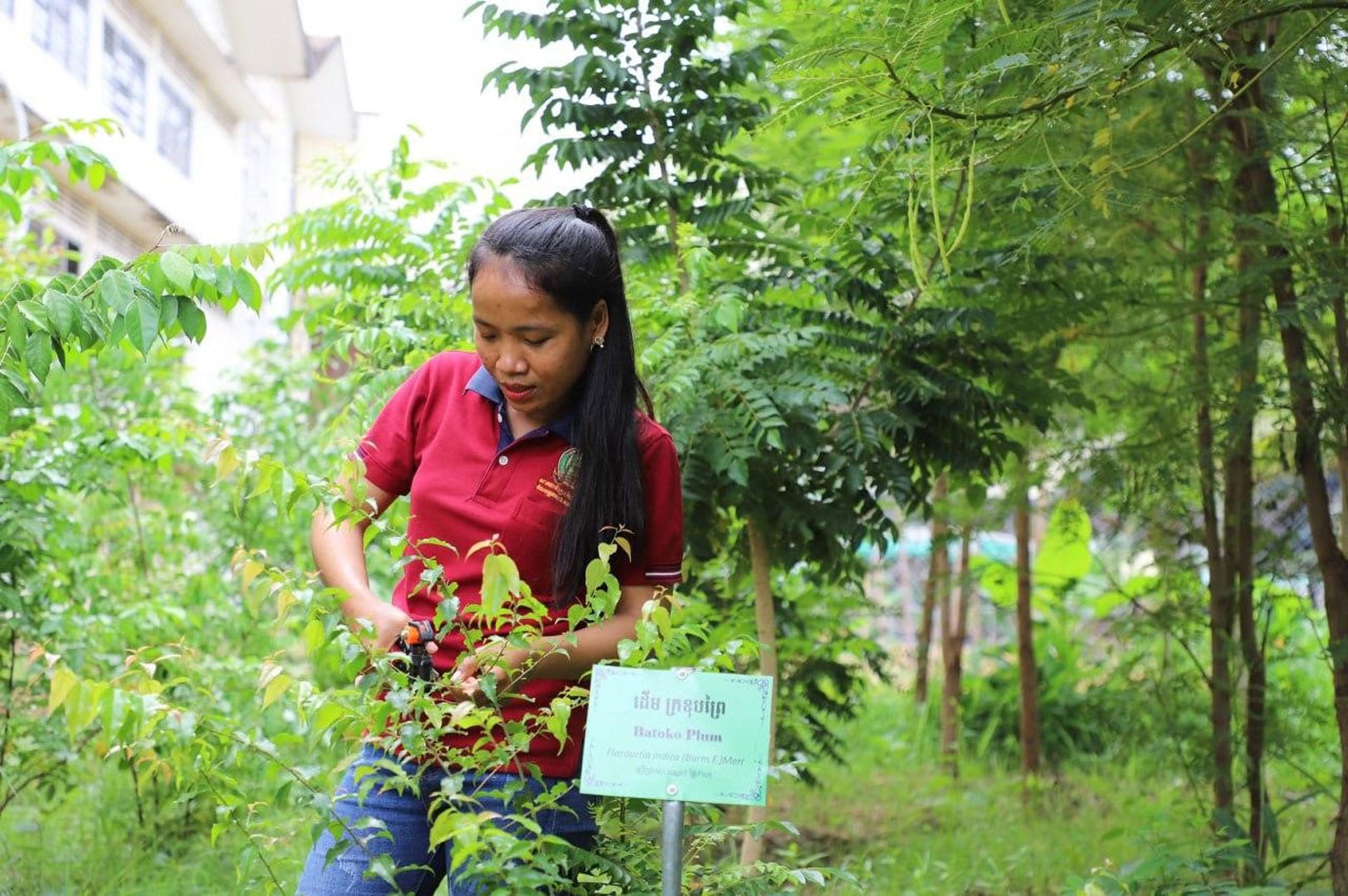Southeast Asia is booming.
Collectively, the ten countries of the Association of Southeast Asian Nations (ASEAN) represent an economy larger than Japan, and this rapidly developing region is home to some of the fastest-growing economies on the planet. With rapid development comes rapid changes, including changing diets and food preferences. Southeast Asian populations are consuming unhealthy fast food in ever greater quantities, emulating the West and their neighbors in the more advanced Asian economies.
Even in Cambodia, which has a rich culinary tradition based on several wild vegetables and fruits, youth are now flocking to the fast-food burger joints. Pao Srean fears something special is about to be lost in this generational shift, so he’s working hard to prevent that from happening. “They call it old-fashioned food,” he said, referring to how young people in Cambodia today look down at the nation’s traditional vegetables and fruits. “But in fact, the old ones contain a lot of nutrition, better than fast foods.”
Foods of the Forest
“The old ones contain a lot of nutrition, better than fast foods.”
Dr. Pao Srean is Dean of the Faculty of Agriculture and Food Processing at the University of Battambang, one of Cambodia’s top public universities. An agronomist educated in Spain, he’s also an expert on dozens of wild varieties of fruits and vegetables that Cambodians used to routinely eat.
Traditional food crops lost to time are often called “forgotten foods” (https://www.growfurther.org/pressing-for-policies-that-promote-forgotten-foods/). Another term for them is neglected and underutilized species, or NUS crops. In Cambodia’s case, wild NUS plants are packed with vitamins and minerals. They can be easily cultivated like domesticated plants since they’re native to the country’s hot and humid tropical environment and adapted to soil conditions there. Dr. Srean is convinced that a greater variety of wild plants cultivated on farms will help Cambodian agriculture build resilience to climate change.
Convincing others to see these wild NUS crops in a different light is another challenge. “The forest was cut, the land was changed to be used for agriculture because of increasing population, and some species can be destroyed,” Dr. Srean explained in an interview with Grow Further. “About 5% of them are cultivated, so we’re trying to promote the cultivation of wild plant species to meet the demand and also to conserve some species that can be neglected or destroyed.”
Between running the university faculty and training graduate students, Srean keeps busy identifying and researching edible plant species growing in Cambodia’s mountains. Indigenous groups still living a mostly traditional rural lifestyle are indispensable to his research, he says, given their intricate knowledge of Cambodia’s wild edible plants. These traditional wild crops include a variety of edible leaves, flowers, and some fruits used to make juices.
They are a wonderful solution to Cambodia’s mounting agricultural challenges, he told Grow Further. “One reason is they adapt well to the climate and resist climate change,” he explained. “Another reason is most of them are perennial growth. We do not need to cultivate or till the soil for planting.” No-till agriculture would help preserve soil carbon and limit erosion and soil fertility losses. At his university’s campus, Dr. Srean leads experiments in growing these plants via methods that mimic how they grow in the wild, arguing that nature knows best.
Banking on the Future
Pao Srean’s ultimate goal is to establish a seed bank devoted entirely to preserving and disseminating wild, native Cambodian crops to Cambodia’s farms and gardens. “Something that links to the farmer,” he explained. “The role of the…university would only be as a coordinator.” It would become his country’s first and only seed bank and a major development in the nation’s agricultural research system.
He already has a “top ten list” of priority species readied for the launch of his wild foods seed bank. The list includes Aganonerion polymorphum, a plant used in soups also valued for its medicinal qualities, and Basella alba, a wild leafy vegetable similar to spinach. He’s also keen on preserving Curcuma longa, a wild variety of turmeric. Moringa oleifera, or simply moringa, is on his list, as are Morinda citrifolia, a plant that bears seeds similar to coffee, and Garcinia oliveri, a wild edible fruit.
To help his dream become reality he’ll need seed capital–no pun intended. Meanwhile, Srean says he’s taking care to identify priority wild plant species that show the most promise in terms of regaining their lost status in the nation’s changing food culture. Again, Cambodia’s indigenous communities are proving themselves to be indispensable to this work. “Currently, we have about 30 species,” he said. “I think we can start with 30 and then expand.”
“Most of them are perennial growth. We do not need to cultivate or till the soil for planting.”
Advocates for NUS crops propose innovating in agriculture by making something old new again. Dr. Srean has the same idea, except he’s seeking to bring a bit of the wild back to Cambodia’s tamed farms and food markets. With luck, Cambodia’s current fast-food craze will simply prove a temporary phase, he hopes. Srean says his country’s true food future lies in the native plants of the past. “Wild food plants we call a transitional food for Cambodians,” he said confidently.
— Grow Further
Photography credit: A university student tends to wild plant species growing at a campus garden. Dr. Pao Srean, University of Battambang.




